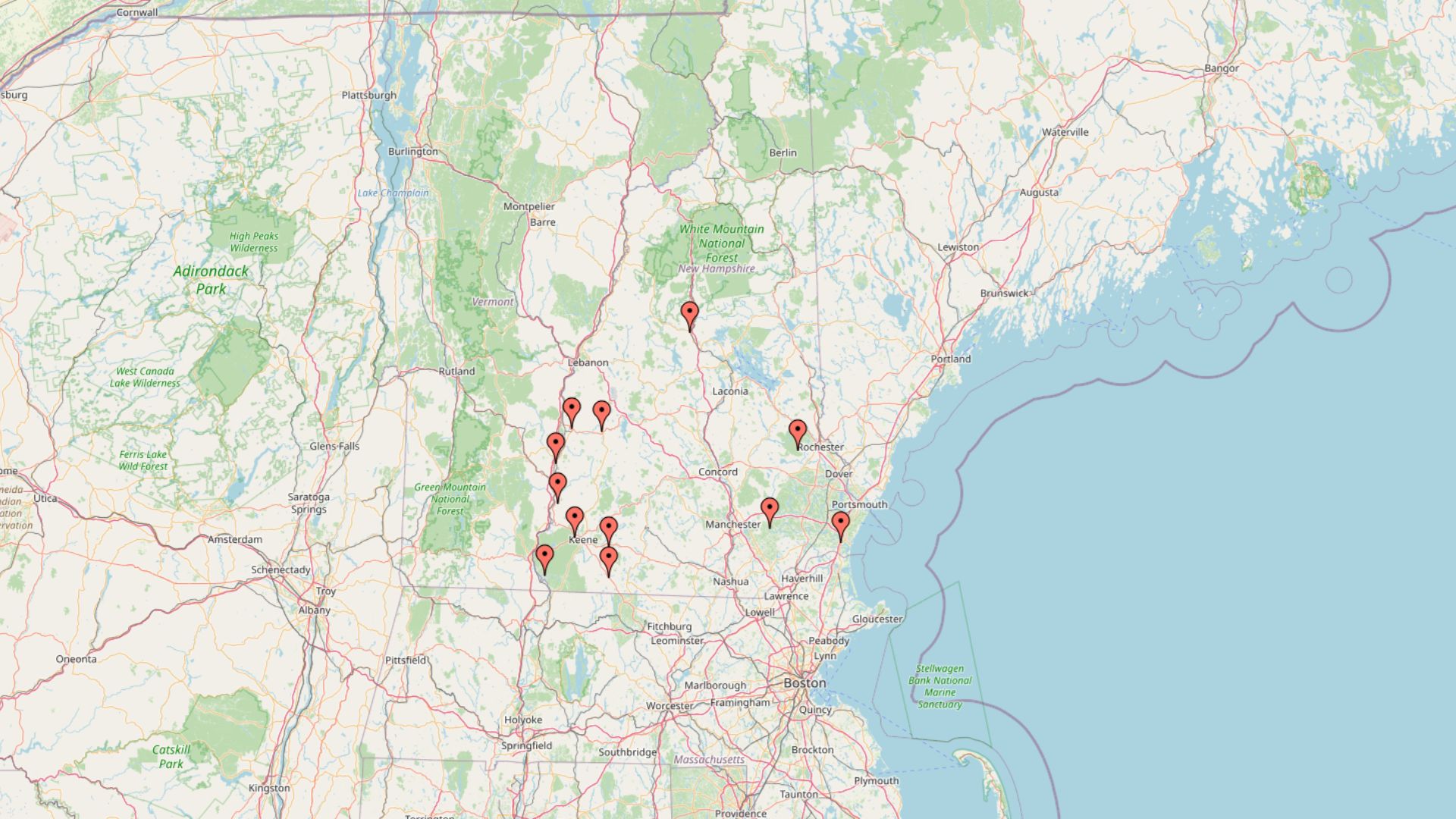Between 2018 and 2023, New Mexico families earning less than $250,000 per year faced rapidly rising home prices and changing market conditions. Many responded by adjusting their budgets, choosing different locations, or exploring alternative property types. Primary residences dominated their purchases, but second homes and investment properties also played a minor role as families adapted to affordability pressures across the state.
Statewide Market Overview

Soaring Prices and Affordability Challenges
New Mexico experienced a sharp rise in home prices from 2018 to 2023, far outpacing income growth. In 2018, the statewide median home price was around $200,000. By 2022, it had climbed to about $306,000 – a 53% increase. Over the same period, the median household income rose only about 22%, from $48,000 to $58,700.
This price acceleration made homeownership increasingly difficult for typical buyers earning under $250,000. Housing costs consumed a larger portion of family budgets by 2023, despite New Mexico’s historically high homeownership rate of 69-71% (above the national average of approximately 65%).
The Pandemic Boom and Aftermath
When COVID-19 hit in 2020, New Mexico saw a homebuying boom fueled by historically low interest rates and remote work opportunities. Demand surged, including interest from out-of-state buyers seeking more space or lower-cost areas. Homes sold quickly, and bidding wars became common in 2020-2021.
By 2022, the trend shifted as the Federal Reserve raised interest rates to combat inflation, pushing mortgage rates above 6-7%. Higher financing costs caused home sales to slow down by 2022 and 2023, with transactions dropping by about 18% from 2022 to 2023.
Record Low Inventory
A striking trend during this period was the extremely low supply of homes on the market. In 2018, there were almost 39,000 active home listings statewide. By 2021, listings had plummeted to about 10,119 as demand outstripped supply. Even as the market cooled in 2023, there were only around 14,421 listings – still far below pre-pandemic levels.
This inventory shortage meant many homeowners chose not to sell, often because they were locked into low mortgage rates. Buyers had fewer choices and frequently competed for the same properties. Even when sales slowed in 2022-2023, prices didn’t drop much because of the persistent low inventory. In fact, the median price increased slightly from $330,000 in 2022 to about $345,000 in 2023 despite the sales slowdown.
Buyer Demographics

Local Residents vs. Out-of-State Buyers
While most homebuyers in New Mexico during 2018-2023 were local residents seeking primary homes, a significant portion were newcomers from other states or investors. New Mexico saw modest population inflow during this period, with many newcomers attracted to areas like Albuquerque and Santa Fe.
About 30% of households moving into New Mexico from 2021-2022 chose Bernalillo County (Albuquerque). Santa Fe County was another popular destination, especially for higher-income migrants – over 44% of households moving from places like Washington D.C. and New York went to Santa Fe. These Santa Fe newcomers had high incomes (average adjusted incomes around $134,000) and tended to be smaller households.
Texas was a major source of movers – nearly 40% of households moving from Texas settled in Doña Ana County (Las Cruces area). This influx of buyers from expensive markets added competition, especially in Santa Fe and Las Cruces.
Investors and Second-Home Buyers
Investors and second-home buyers also played a significant role in the market. Nationwide, investors bought roughly 1 in 4 homes in 2021 – a record high share – and Sun Belt states were especially attractive to them. New Mexico, being relatively affordable and landlord-friendly, likely saw increased investor interest during the boom.
In popular tourist and retirement areas like Santa Fe, Taos, and Ruidoso, many homes were purchased as vacation properties or short-term rentals. Taos County had about 20% of its housing stock being used as vacation homes as of 2018. This removed many houses from the market for local residents, pushing prices up and making finding a home more difficult for full-time residents.
Housing Types and Preferences
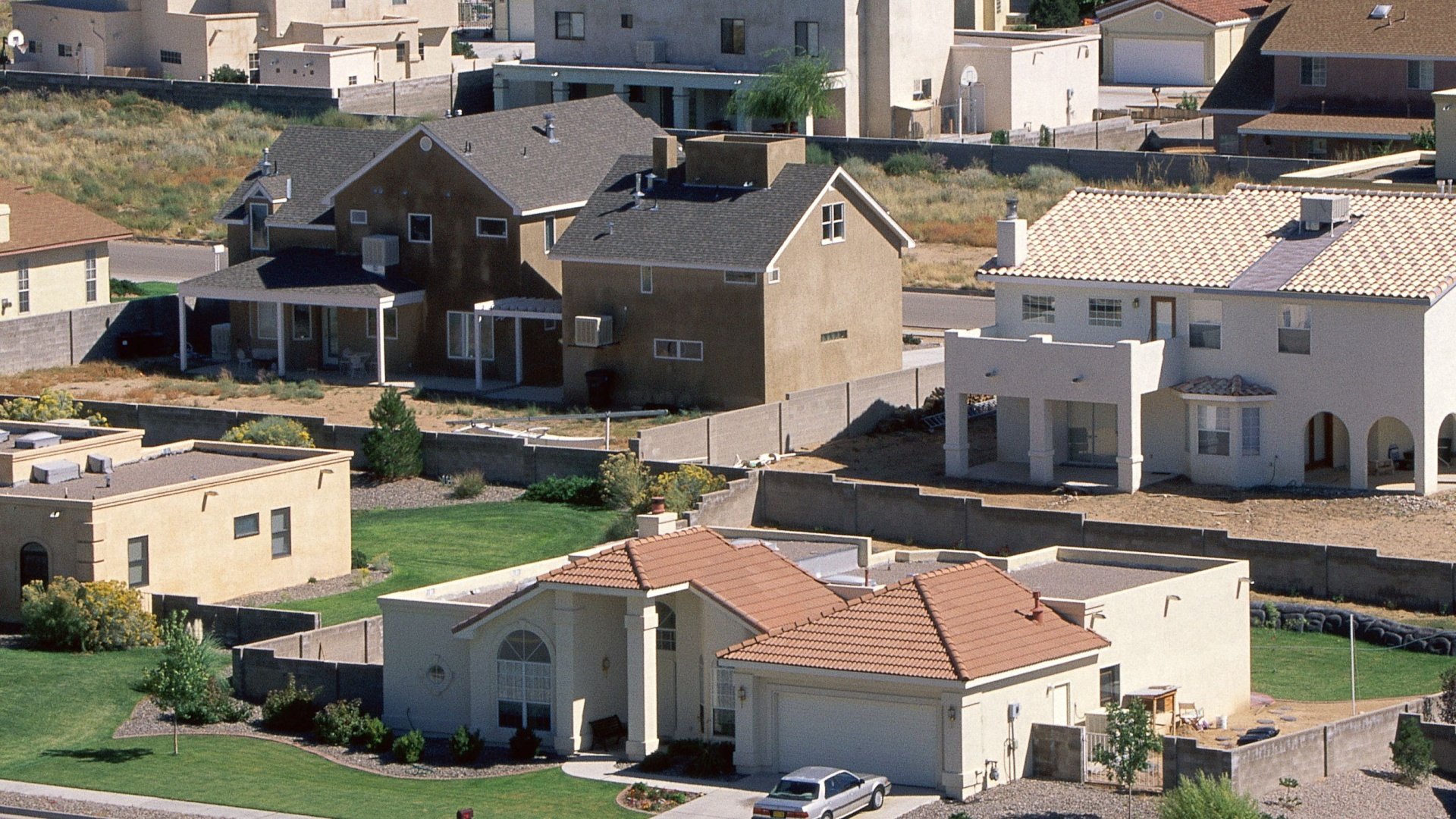
Single-Family Dominance
The vast majority of home purchases in New Mexico are single-family houses. State data shows that about 65.7% of all occupied housing units are single-family detached homes. Culturally and historically, New Mexicans prefer stand-alone houses with some land, and many cities have sprawling single-family neighborhoods.
From 2018 to 2023, most buyers under $250,000 income were looking at typical 3-bedroom homes suitable for families. Even as prices rose, single-family homes remained the primary choice for owner-occupiers.
Manufactured Homes as Affordable Options
New Mexico has a significant number of manufactured and mobile homes, comprising over 15% of the state’s housing stock. These are especially common in rural areas and smaller towns, where they provide a more affordable alternative to site-built houses.
Many moderate and lower-income households purchased manufactured homes during 2018-2023 since they tend to cost less than traditional houses. Banks do offer loans for manufactured homes (especially newer ones on permanent foundations), making ownership attainable for families with modest incomes.
The Smaller Condo and Townhome Market
Only a small share of New Mexico home purchases were condos or townhouses, making up around 3.7% of the housing stock. These attached housing units are more common in central Albuquerque, parts of Santa Fe, and a few other cities.
During 2018-2023, some buyers (especially first-time buyers and retirees) opted for condos/townhouses due to their lower prices or reduced maintenance requirements. However, New Mexico does not have as large a condo market as more urbanized states – most people still prefer owning land and a house if possible.
New Construction vs. Existing Homes
Buyers during this period faced choices between brand-new homes and existing older properties. Homebuilders in New Mexico were active, especially around Albuquerque’s Westside, Rio Rancho, and Las Cruces. However, new construction prices were generally higher than older resales, partly due to rising costs of labor and materials.
Households under $250,000 income often bought older homes built between the 1970s and 2000s, which were cheaper than newly built ones. Many families compromised by purchasing older homes and gradually upgrading them over time, making home improvement and renovation activity significant during this period.
Regional Market Variations
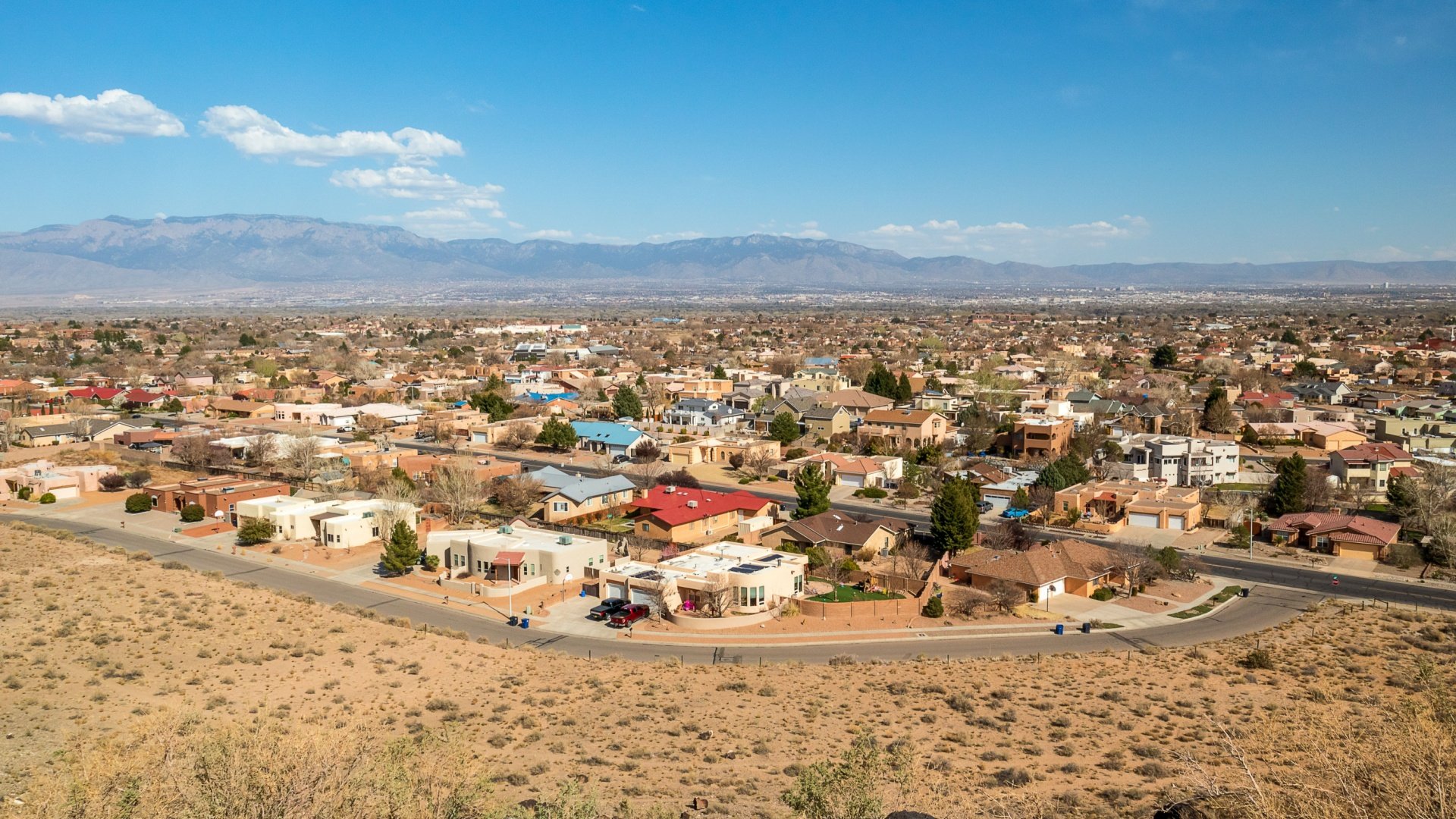
Albuquerque Metro Area
From 2018 to 2023, Albuquerque saw strong price growth and high demand. In 2018, the median sale price for a detached single-family home in the greater Albuquerque area was around the low $200,000s. By 2023, the median price had climbed to approximately $345,000 – an increase of roughly 50-60% over five years. Most of that increase happened during 2020-2022 when buyer demand surged.
A typical Albuquerque homebuyer in this period was a local working family or professional. With Albuquerque’s median household income around $60,000, many buyers were dual-income households trying to purchase their first home or move up to a larger one.
Investors were also active – Albuquerque’s relatively affordable prices (compared to Western cities like Denver or Phoenix) attracted investors buying single-family homes to rent out. First-time buyers sometimes lost out to cash offers from investors or out-of-state newcomers.
Santa Fe and Northern New Mexico
Santa Fe experienced one of the most heated markets in the state. By the end of 2022, the city of Santa Fe’s median home price reached about $608,700 (a nearly 14% jump just from 2021 to late 2022). Santa Fe County’s median was even higher – around $798,000 at the end of 2022 for single-family homes.
These prices far exceeded what the median local household income (roughly $70,000) could afford, indicating many buyers in Santa Fe were from wealthier places or had high incomes/savings. Indeed, migration data confirms Santa Fe attracted many out-of-state households with very high incomes (often well above $150,000/year).
The market became so expensive that by late 2022, sales actually plunged because there were few affordable options. The number of homes sold in the city of Santa Fe dropped by 42% in late 2022 compared to late 2021. Despite the drop in sales, prices stayed high or even kept rising because inventory remained scarce.
Santa Fe and surrounding areas (like Taos and Angel Fire) have a large number of second homes. Many houses are used as vacation getaways or short-term rentals. In Taos County, around 20% of all housing units were classified as vacation homes by the late 2010s, significantly driving up housing costs for locals.
Las Cruces and Southern New Mexico
Las Cruces has historically been more affordable than Albuquerque or Santa Fe. By late 2023, the median sales price for single-family homes in Las Cruces reached around $310,000, up about 12% from the year before.
During the pandemic boom, Las Cruces benefited from an influx of buyers from out of state, especially Texas and California. A local survey of home sales in 2023 found that buyers from 26 different states had purchased homes in Las Cruces, with nearly 40% of newcomers coming from California and Texas.
Despite rising prices, Las Cruces remained more attainable for middle-income families than Santa Fe or Albuquerque. A household earning around $70,000 might realistically afford a home in the $250,000-$300,000 range, which could still be found in Las Cruces (especially before 2023’s price increases).
In the southeastern “oil patch” (Lea and Eddy Counties), Carlsbad and Hobbs experienced a housing boom driven by the oil and gas industry. By 2018, Carlsbad faced a housing crisis due to the oil boom – housing was “expensive and in short supply” when oil activity was high. Median prices in Carlsbad went from well under $200,000 to over $250,000 during this period.
From Renting to Homeownership

First-Time Buyer Challenges
Despite some gains in homeownership during the period, first-time homebuyers faced major hurdles. Rapid price increases meant that down payments and loan qualification requirements rose significantly. A house that cost $180,000 in 2018 might cost $280,000 in 2022 – putting it out of reach for many renters whose incomes hadn’t risen proportionally.
For those earning $50,000-$60,000 (common for young professionals in New Mexico), affordability was particularly challenging by 2023. Many potential first-time buyers found they needed to save longer for down payments or pay higher rents in the meantime.
The housing finance situation created a paradox – by 2023, with interest rates high and home prices still elevated, the barrier for first-time buyers was perhaps the highest it had been in recent memory.
Assistance Programs
There were efforts to help renters become homeowners. The New Mexico Mortgage Finance Authority (MFA) continued programs for first-time buyer mortgages and down payment assistance. Over 2018-2023, MFA provided hundreds of millions in mortgage assistance, helping thousands of families buy homes.
These programs often target incomes under approximately $90,000 (depending on household size), directly supporting moderate-income renters in making the leap to ownership. Community organizations also ran financial literacy and credit repair workshops to prepare renters for homeownership.
Second Homes and Investment Properties
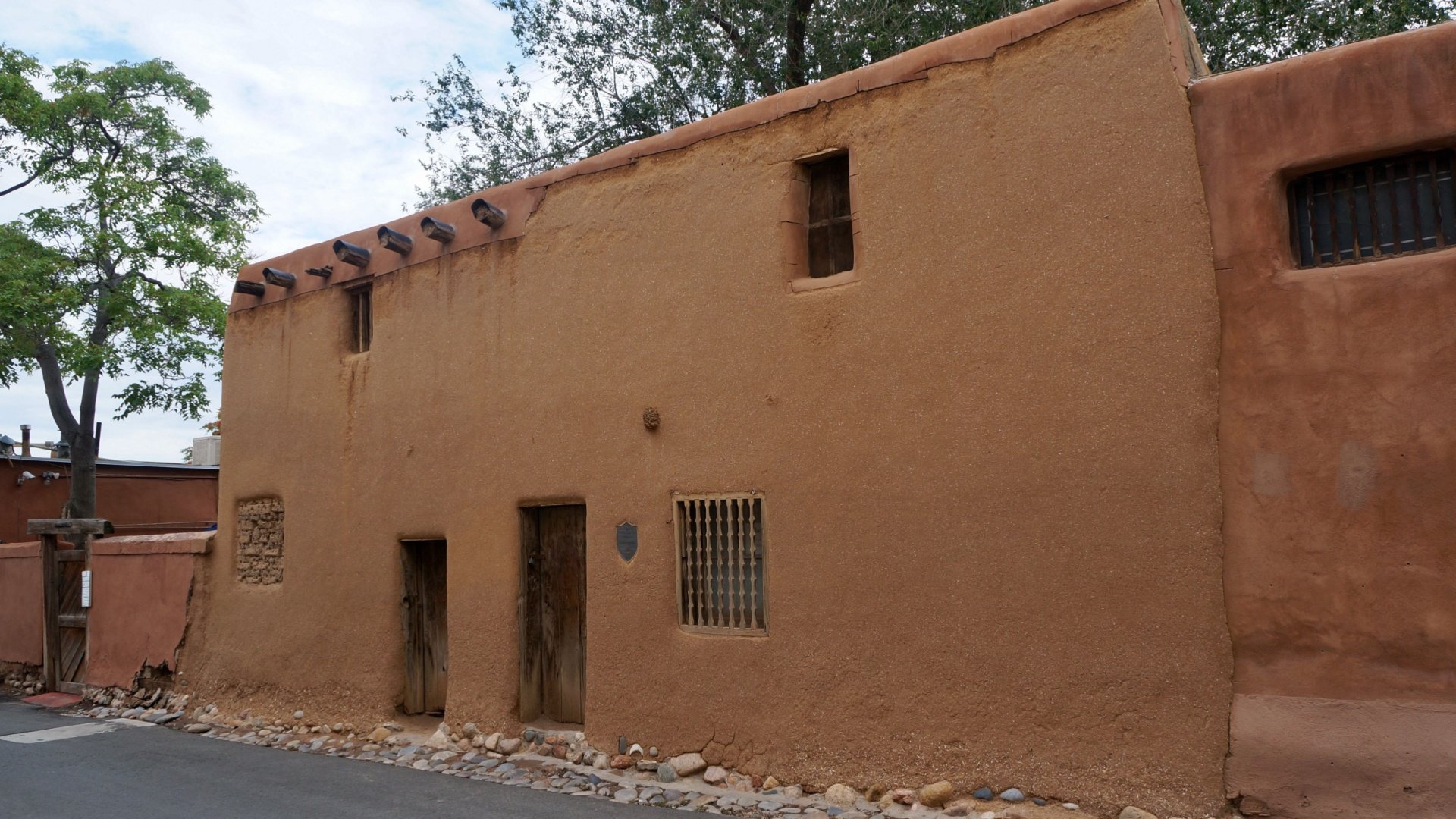
Vacation Home Impact
New Mexico’s natural beauty and cultural attractions make it a draw for second-home owners. Areas like Santa Fe, Taos, Ruidoso, and Angel Fire saw many purchases by people who live primarily elsewhere.
During 2020-2021, second-home purchases nationally skyrocketed – one report noted second-home mortgage rate locks were up over 80% for 11 straight months in 2020-21. New Mexico likely shared in that boom as remote work allowed people to spend extended time in their vacation homes.
When a significant portion of homes in a community are owned by part-time residents, it drives prices up and availability down for locals. This was particularly evident in tourist destinations like Taos and Santa Fe.
Investment Property Trends
Investors target single-family homes, condos, or multifamily properties to rent out. The investor share of purchases grew during this period, reaching about 24% of home sales nationally in late 2021.
New Mexico, with relatively low home prices, attracted both small “mom-and-pop” investors and some larger companies. Cities like Albuquerque saw institutional buyers purchase homes to convert into rental houses. Some neighborhoods had a noticeable uptick in homes being bought by LLCs or out-of-town landlords.
While investors provided needed rental housing, they also added competition that pushed prices higher. This was especially challenging for first-time buyers who often competed for the same modest starter homes that investors targeted.
Comparing 2018-2023 to the Previous Decade
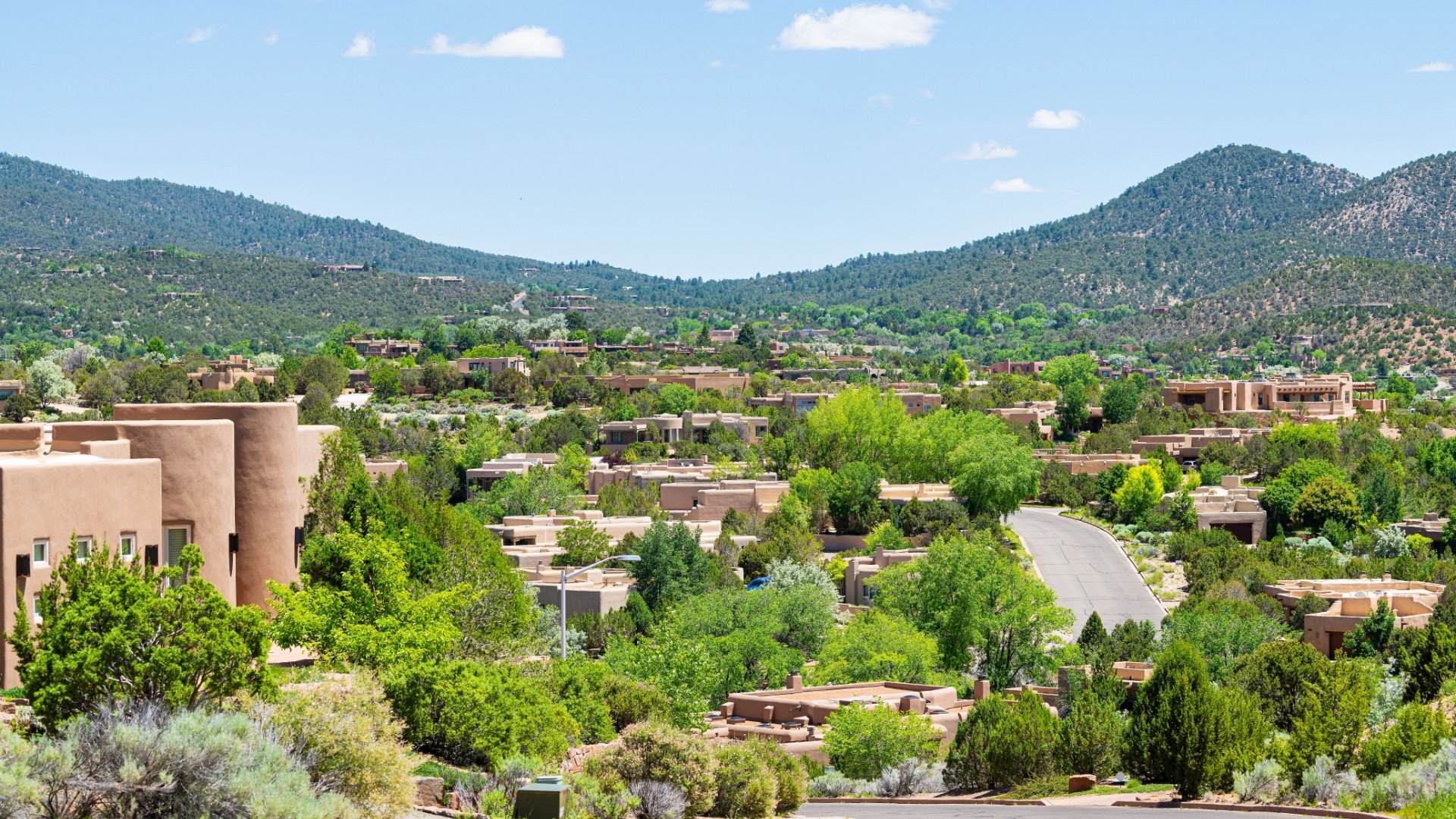
Market Reversal
The period from 2008 to 2017 was dramatically different, encompassing the housing crash and recovery. In contrast to 2018-2023’s boom, the earlier decade began with falling home prices and a slow recovery.
Around 2008-2011, New Mexico home prices fell or stagnated after the mid-2000s boom. The median detached house price in the Albuquerque area was about $175,000 in 2013 (near the bottom after the crash). Through 2014-2017, prices rose slowly but steadily as the economy healed.
The 2008-2017 period was marked by foreclosures and distressed sales, particularly in the early years. Many New Mexico families faced foreclosure or were “underwater” on mortgages. The state implemented foreclosure prevention programs and legal changes to help underwater homeowners.
In contrast, 2018-2023 saw historically low foreclosure rates. Homeowners had more equity because of rising prices, and during COVID, foreclosure moratoriums and forbearance plans prevented a wave of defaults.
Supply and Demand Flip
Coming out of the mid-2000s building boom, New Mexico in 2008 had an oversupply of homes. Home building slowed for several years after 2008 as builders pulled back, which gradually helped balance the market by the mid-2010s.
The story flipped to undersupply in 2018-2023. New construction did not keep pace with population and job growth, and existing owners stayed in their homes longer. By 2021, inventory was far below normal levels.
This created opposite market conditions: 2008-2012 was a buyer’s market with negotiable prices and homes sitting for months, while 2018-2021 was a strong seller’s market with buyers often paying above asking price and competing fiercely.
Conclusion
Homebuying trends in New Mexico from 2018 through 2023 were marked by rapid changes and challenges for typical households. Prices climbed steeply, reaching record highs by 2023, straining affordability for families earning under $250,000. Low interest rates and pandemic-era dynamics fueled a buying frenzy in 2020-2021, followed by a cooldown in sales when interest rates rose in 2022-2023.
Regionally, Albuquerque saw strong demand and price growth but remained a centerpiece for homeownership, Santa Fe became very expensive and dominated by wealthier and out-of-state buyers, Las Cruces grew as an attractive and comparatively affordable market, and rural areas had mixed fortunes depending on local economies.
As of the end of 2023, many New Mexico families were still navigating this challenging market – balancing the dream of homeownership with the reality of higher prices and interest rates. Going forward, efforts to increase housing supply, provide assistance to first-time buyers, and manage the influence of investors and second homes could help ensure that families earning under $250,000 can continue to buy homes in New Mexico.
References
- Median home prices in NM nearly double in 10 years | Greater Albuquerque Association of REALTORS® Blog
- Median home prices in New Mexico nearly double in 10 years | Albuquerque Business First
- What is the homeownership rate in New Mexico? | USAFacts
- Investors bought a quarter of homes sold last year, driving up rents | Source New Mexico
- Housing Needs Assessment | Town of Taos
- Santa Fe Home Prices Continue to Rise as Sales Plunge | Santa Fe Reporter
- Las Cruces home values hold steady as inventory continues to grow | Gary Sandler
- Baby boomers own big houses and it’s affecting the housing crunch | NPR
- Changes in Homeowner Tenure? | National Association of REALTORS®
- Capital gains tax discourages older homeowners from downsizing | Housing Wire
- Mortgages for second homes skyrocket 178% | Santa Fe Beautiful Homes
- How New Mexico Just Helped Underwater Homeowners Far More Than DC Bureaucrats Have In Three Years | Business Insider



